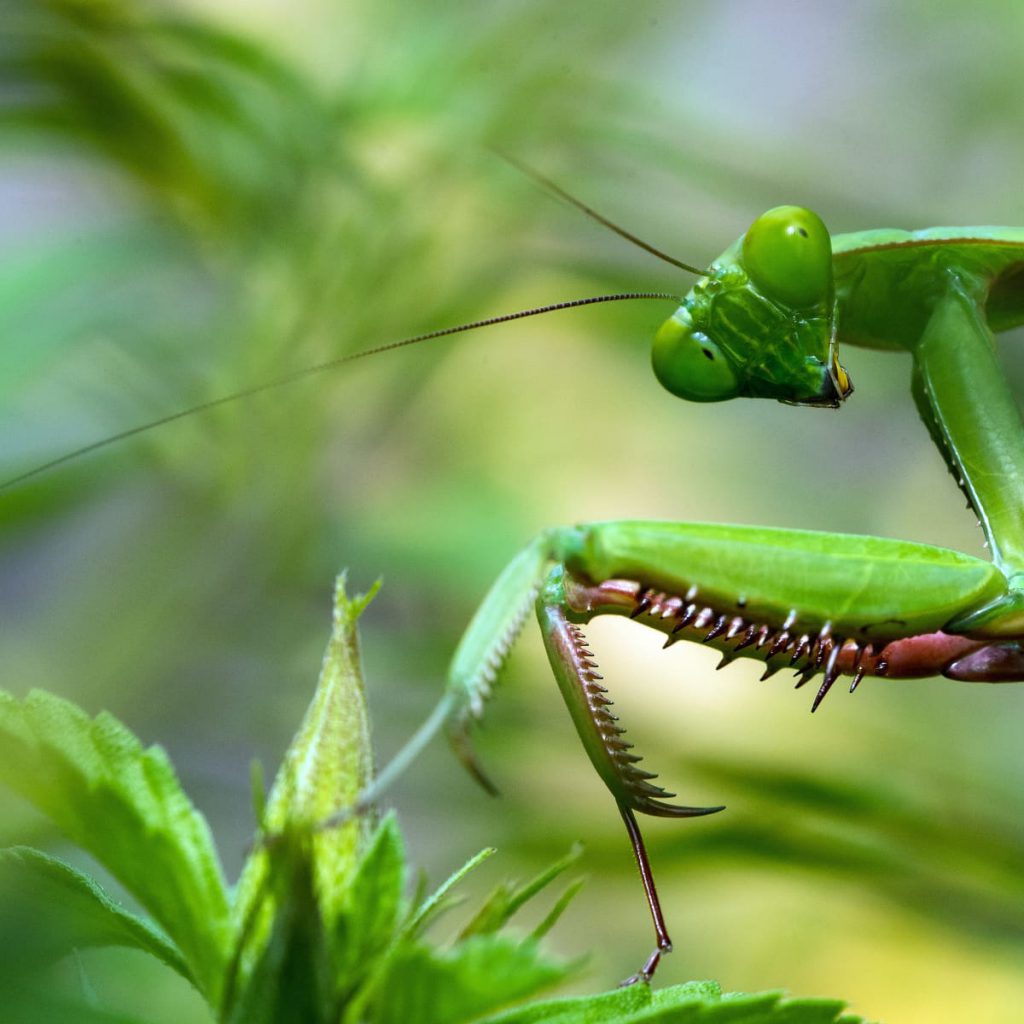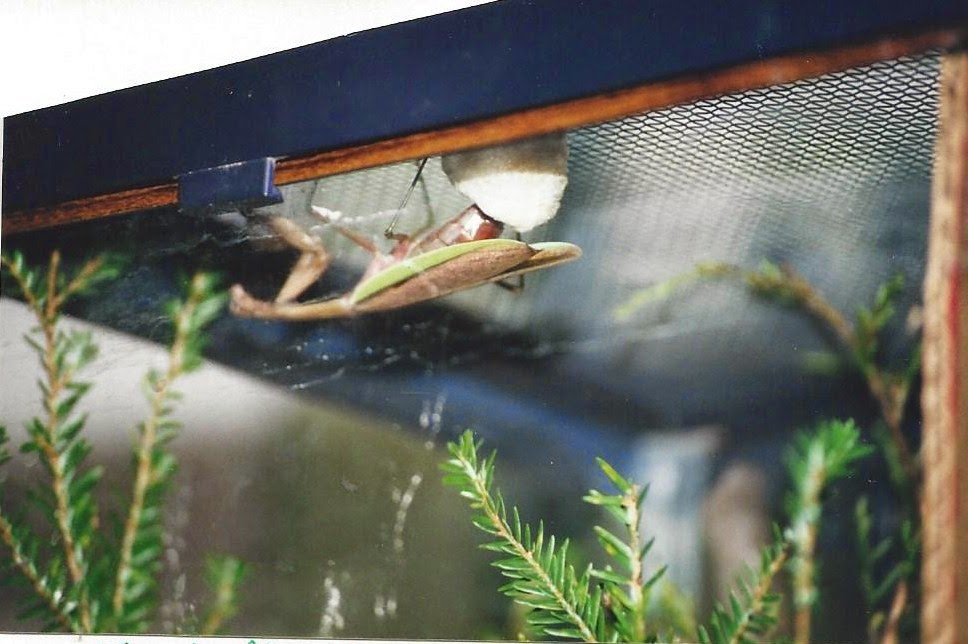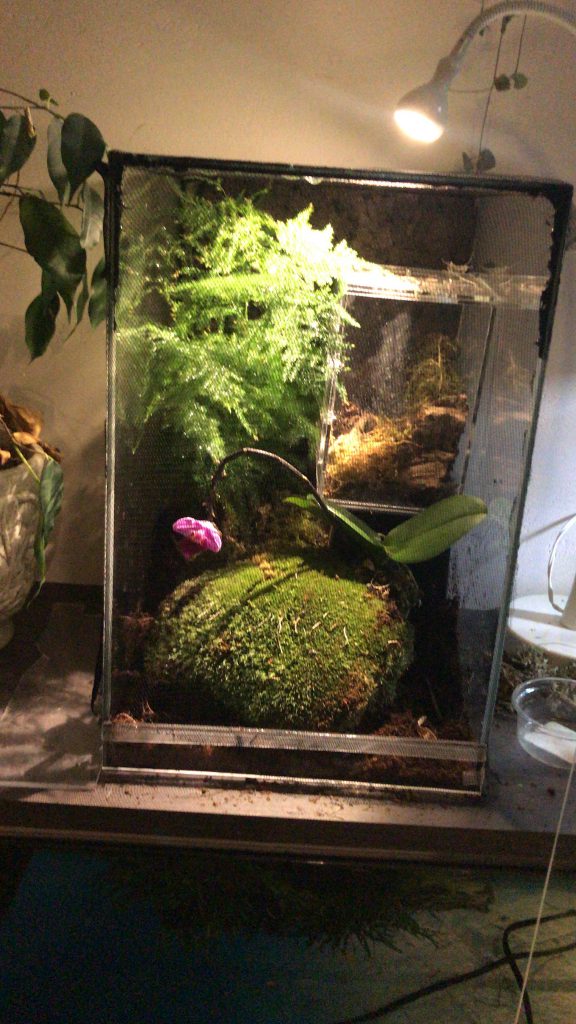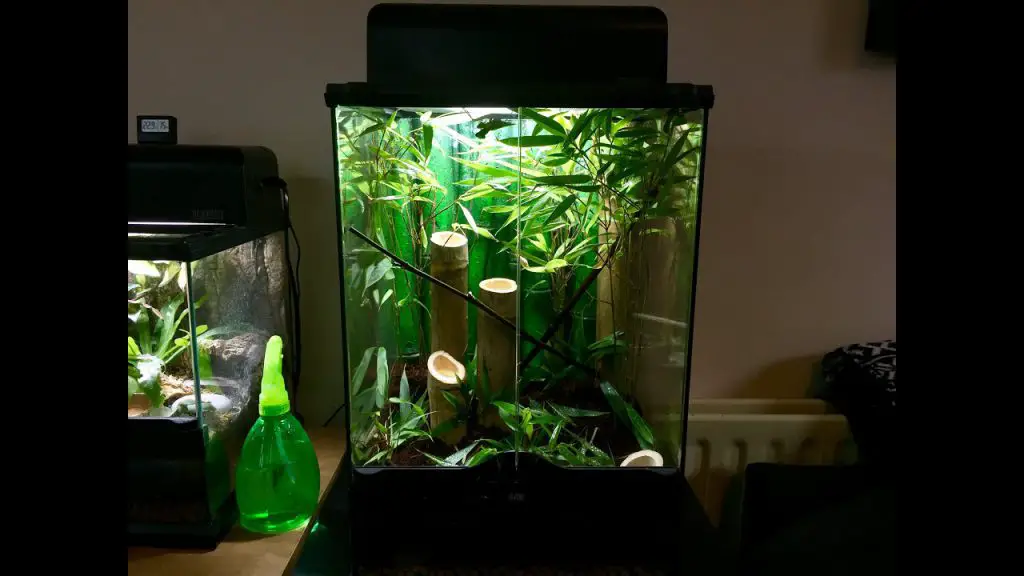Welcome to our comprehensive guide on crafting the perfect praying mantis enclosure, where your curious companions can thrive in their own captivating haven. Whether you’re a seasoned mantis enthusiast or new to the delightful world of mantis-keeping, we’re here to equip you with all the essential tips and tricks to build an ideal habitat for your mantises.
In this carefully curated guide, we’ll delve into the crucial elements of creating an enclosure that not only caters to your mantises’ needs but also showcases their remarkable beauty and behaviors. From selecting the right enclosure type to introducing the best plants and decorations, we’ll walk you through each step of the process with expertise and care.
So, join us on this enchanting journey, as we explore the art of designing a praying mantis enclosure that fosters a thriving, healthy, and awe-inspiring environment for your beloved insect companions. Let’s embark on this exciting adventure together and create a home where your mantises can flourish and enchant you with their captivating charm!
- Different Types of praying mantis Enclosures Available
- Perfect praying mantis terrarium size
- Appropriate Ventilation for the Mantis's Well-Being
- Choosing the Right Location for the Enclosure
- Substrate Options and Considerations
- Making praying mantis enclosure molting friendly
- Best Plants for Praying Mantis Enclosure
- Regular Cleaning and Maintenance Routines for Praying Mantis Terrarium
- Conclusion

Different Types of praying mantis Enclosures Available
As you embark on the journey of setting up the perfect praying mantis habitat, you’ll encounter three primary types of enclosures, each offering its unique benefits to cater to your mantises’ needs and your preferences.
1. Glass Tanks
Pros:
- Excellent Visibility: Glass tanks provide a crystal-clear view of your mantises, allowing you to observe their behaviors and movements with ease.
- Retains Heat and Humidity: Glass tanks are well-known for their ability to maintain stable temperatures and humidity levels, creating a comfortable environment for your mantises.
- Prevents Escape: The solid walls of glass tanks make them escape-proof, ensuring that small feeder insects can’t escape.
Cons:
- Limited Ventilation: Compared to mesh cages, glass tanks offer less airflow, which might lead to excess humidity if not adequately regulated.
- Heavy and Fragile: Glass tanks can be heavy and fragile, making them more challenging to move and potentially prone to breakage.
2. Mesh Cages
Pros:
- Superior Ventilation: Mesh cages allow excellent airflow, preventing excess humidity and promoting a well-ventilated environment for your mantises.
- Lightweight and Portable: Mesh cages are generally lightweight and easy to move, making maintenance and cleaning more convenient.
- Ideal for Communal Species: Mesh cages are well-suited for keeping multiple mantises together in a communal setup, promoting social interactions and reducing stress.
Cons:
- Reduced Visibility: While mesh cages offer decent visibility, the mesh itself might slightly obstruct the view compared to glass tanks.
- Limited Heat Retention: Mesh cages might not retain heat as effectively as glass tanks, requiring additional measures to maintain the desired temperature.
- Potential for Escape: Some smaller mantises could potentially squeeze through the mesh, necessitating careful selection of species suitable for this type of enclosure.
3. Acrylic Cages
Pros:
- Great Visibility: Acrylic cages offer excellent clarity and visibility, providing a similar viewing experience to glass tanks.
- Lightweight and Durable: Acrylic cages are lighter than glass tanks and less prone to breakage, making them a sturdier and more portable option.
- Customizable: Acrylic can be easily shaped and customized, allowing for creative designs and additional features in the enclosure.
Cons:
- Moderate Ventilation: Acrylic cages provide better ventilation than glass tanks but might not match the airflow of mesh cages.
- Heat Retention: Acrylic cages retain heat reasonably well, but additional heat sources might still be required in cooler environments.
- Scratch-Prone: Acrylic can be prone to scratching, requiring gentle cleaning and maintenance to keep the enclosure clear and visually appealing.
4. Plastic Containers
Pros:
- Affordable: Plastic containers are a budget-friendly option, making them an economical choice for those on a tight budget.
- Easy to Find: Plastic containers are readily available in various sizes, making them accessible for mantis keepers.
Cons:
- Limited Aesthetics: While cost-effective, plastic containers might not offer the same visual appeal as glass tanks or acrylic cages.
- Minimal Ventilation: Plastic containers might not provide as much airflow as mesh cages, necessitating careful monitoring of humidity levels.
- Durability Concerns: Some plastic containers might not be as sturdy as other options, requiring extra care to prevent damage or escape.
When considering plastic containers, keep in mind their affordability and accessibility, but also be mindful of the potential trade-offs in aesthetics and durability. Depending on your mantises’ needs and your preferences, any of these enclosure types can serve as a welcoming and secure home where your mantises can flourish and delight you with their captivating presence.

Perfect praying mantis terrarium size
When determining the perfect size for a praying mantis terrarium, it is crucial to prioritize the well-being of your mantis, particularly during the molting process. As a rule of thumb, a minimum enclosure size can be calculated based on the mantis’s dimensions, ensuring adequate space for movement and comfort. A single mantis should have a terrarium length and width approximately twice its size, with the height being around three times its size. However, it is important to note that larger species of praying mantis require substantially bigger enclosures than smaller ones, such as the delicate orchid mantis.
Ensuring a sufficiently large enclosure is not merely a matter of convenience but a vital aspect of your mantis’s health. Inadequate space can lead to cramped conditions, causing stress and potentially leading to mismolts during the molting process. Mismolts occur when the mantis is unable to shed its exoskeleton properly due to limited space, resulting in deformities or injuries. In severe cases, mismolts can be fatal, leading to the loss of your beloved pet.
Appropriate Ventilation for the Mantis’s Well-Being
Ventilation is a vital aspect of creating the perfect praying mantis enclosure, as it directly impacts the overall well-being of your captivating companions. Adequate airflow ensures a fresh and oxygen-rich environment, which is essential for maintaining the optimal health of your mantises. Proper ventilation helps regulate humidity levels within the enclosure, preventing excess moisture that could lead to mold growth or respiratory issues. Also stale air can result in death of your belowed pet!
Balancing ventilation is crucial, as too much or too little airflow can be detrimental to your mantis’s health. While mesh cages offer excellent ventilation, glass tanks and acrylic enclosures may require additional measures, such as strategically placed vents or fans, to promote proper airflow.

Choosing the Right Location for the Enclosure
Selecting the ideal location for your praying mantis enclosure is a critical consideration to ensure your mantises’ well-being and happiness. Optimal lighting, temperature, and humidity are key factors that contribute to creating a conducive environment for these mesmerizing insects.
Lighting
Place the enclosure in an area that receives natural, indirect light, mimicking the dappled light they would encounter in their natural habitat. Avoid placing the enclosure in direct sunlight, as this can lead to overheating and potential harm to your mantises.
Temperature
Mantises are ectothermic, meaning their body temperature is influenced by their environment. To maintain the perfect temperature, choose a location where the enclosure won’t be exposed to extreme fluctuations or drafts. Aim for a stable temperature range suitable for your mantis species’ requirements.
Humidity
Proper humidity levels are essential for your mantises’ health and molting process. Depending on the species, you may need to provide varying humidity levels. Position the enclosure away from sources of excessive moisture, such as bathrooms or kitchens, to prevent an overly humid environment.
By carefully considering these factors and selecting a well-suited location, you create a harmonious living space where your mantises can thrive. A balanced environment with optimal lighting, temperature, and humidity ensures your mantises will enchant you with their captivating behaviors and lead healthy lives in their new home.
Substrate Options and Considerations
Selecting the right substrate is crucial for creating the perfect praying mantis enclosure, as it directly impacts your mantises’ comfort and overall well-being. The substrate plays a significant role in maintaining optimal humidity levels, ensuring your pets thrive in a suitable environment.
1. Eco-Friendly Soil: Organic soil is a natural choice for maintaining humidity in the enclosure. It’s also eco-friendly and natural.
2. Vermiculite: Vermiculite is favored for its moisture-retention capabilities, helping to create the desired humidity levels in the enclosure. Mixing it with other substrates can enhance drainage and moisture control.
3. Coconut Fiber (Coir): Coconut fiber is an eco-friendly and moisture-absorbent substrate that significantly contributes to regulating humidity levels. It adds a natural aesthetic to the enclosure, creating a visually appealing environment. It is the most popular option.
4. Artificial Turf or Moss: Artificial turf or moss can be a fantastic option for mantises that enjoy climbing and perching. While it doesn’t retain moisture as effectively as other substrates, it adds visual interest to the enclosure.
5. Paper Towels or Tissue Paper: While paper towels or tissue paper are convenient for cleaning, they do not retain moisture well. It’s essential to consider this when maintaining humidity levels for your mantises.
No Substrate Option: Though it’s possible to have no substrate at all, it’s important to note that this can make it more challenging to maintain adequate humidity levels. Additionally, an enclosure without substrate may not look as visually appealing as those with a suitable substrate.
Before making your choice, consider the specific needs of your mantis species and their natural habitat. Select a substrate that will help maintain the desired humidity levels and provide a comfortable and enriching environment for your mantises to thrive.
Making praying mantis enclosure molting friendly
Creating a well-equipped praying mantis enclosure requires attention to essential elements that support the health and happiness of your captivating pets. One critical aspect is ensuring the enclosure’s ceiling is covered with fly-screen or a similar material, allowing mantises to adhere to it effortlessly. This feature is particularly vital during the molting process, as mantises need a secure surface to cling to while shedding their exoskeletons.
To enhance the environment further, providing a stick, branch, or mesh on the enclosure’s walls allows your mantises to climb and reach the ceiling comfortably. This climbing opportunity not only promotes natural behaviors but also assists in the molting process, ensuring your mantis can molt successfully and lead contented lives in their well-designed and nurturing habitat.

Best Plants for Praying Mantis Enclosure
Incorporating live plants into your praying mantis enclosure offers numerous advantages, enriching the environment and supporting your captivating pets’ well-being. Some top plant choices include:
1. Ficus benjamina (Weeping Fig): With its attractive foliage and climbing potential, Ficus benjamina is a favored choice among mantis keepers. It provides climbing opportunities for your mantises without taking up excessive space, ensuring they have room to move freely and molt comfortably.
2. Golden Pothos (Epipremnum aureum): Golden Pothos is an excellent low-maintenance option, with its trailing vines perfect for mantises to climb and explore. Its adaptable nature allows it to thrive in various lighting conditions, making it a versatile addition to any enclosure.
3. Ferns (Various species): Ferns are another fantastic choice, bringing a lush and vibrant ambiance to the enclosure. Their delicate fronds create a natural aesthetic while offering mantises opportunities to perch and climb.
4. Spider Plant (Chlorophytum comosum): The Spider Plant’s arching leaves make it a visually appealing option, especially for smaller mantis species. It occupies minimal space, ensuring your mantises have ample room to molt comfortably.
5. Orchids (Various species): Orchids add elegance to any mantis enclosure, with their stunning flowers and suitable perching spots. Their compact size makes them an excellent choice, as they won’t overwhelm the enclosure.
6. Nepenthes (Pitcher Plants): For larger mantis species, Nepenthes pitcher plants can be an intriguing addition. Their unique pitcher-shaped traps add visual interest without occupying excessive space.
Apart from live plants, fake plants can also be used in the enclosure. Artificial plants offer the advantage of requiring less care, making them a practical option for those with limited time for maintenance.
The key is to strike a balance between providing an enriching environment with vegetation and ensuring the mantises have enough space to molt comfortably. By carefully selecting appropriate plants or artificial alternatives, you can create a captivating and well-balanced habitat where your mantises can flourish and exhibit their enchanting behaviors.

Regular Cleaning and Maintenance Routines for Praying Mantis Terrarium
Ensuring a clean and well-maintained environment is crucial for the health and happiness of your praying mantises. Regular cleaning routines help create a safe and comfortable habitat where your captivating pets can thrive.
1. Substrate Maintenance: If your mantis enclosure includes a substrate like soil or vermiculite, it’s essential to monitor and manage its condition regularly. Removing waste and uneaten prey will prevent odor and keep the enclosure clean. Additionally, some keepers opt to introduce isopods, small scavengers that can help control mold and waste in the substrate, contributing to a cleaner and healthier habitat.
2. Enclosure Cleaning: The frequency of full enclosure cleaning will depend on the type of container and substrate used. For example, glass tanks and acrylic enclosures may require less frequent cleaning compared to mesh cages, which might accumulate debris and waste more quickly. When it’s time for a complete cleaning, remove all contents, clean and disinfect the enclosure, and replace the substrate if needed.
3. Monitoring Humidity and Temperature: Regularly check humidity and temperature levels in the enclosure to ensure they remain within the appropriate range for your mantis species. Maintaining the right environmental conditions contributes to your mantises’ well-being and helps prevent issues related to excessive moisture or dryness.
By establishing a consistent cleaning and maintenance routine, you create a healthy and hygienic living space where your mantises can thrive. Properly caring for your mantis enclosure not only benefits your pets but also enhances your experience as a mantis keeper, allowing you to enjoy the captivating world of these fascinating insects to the fullest.
Conclusion
In summary, creating a suitable praying mantis enclosure is of utmost importance to ensure the well-being and happiness of these captivating insects. The right habitat allows mantises to exhibit natural behaviors and promotes a stress-free environment. Key points for a healthy and thriving enclosure include choosing the appropriate size and type, providing suitable substrates and live plants, regular cleaning and maintenance, and monitoring humidity and temperature levels.
Embracing the journey of caring for praying mantises is a rewarding experience, filled with enchanting moments and a deeper connection to the wonders of the insect world. With proper care and attention, you can witness these fascinating creatures flourish in their beautifully designed home and enjoy the marvels of nature at its finest.
If you found this article interesting, don’t hesitate to share it on social media!
May interest you
What do praying mantis do in the winter?
Why Do Praying Mantis Sway? 6 Reasons Behind Mantis Dance
Can praying mantis fly? The aerial secrets of mantids
Are praying mantis poisonous?
One prevalent question that surrounds these enigmatic insects is “are praying mantis poisonous?”. In this article, we will delve into the world of praying mantises to uncover the facts behind…